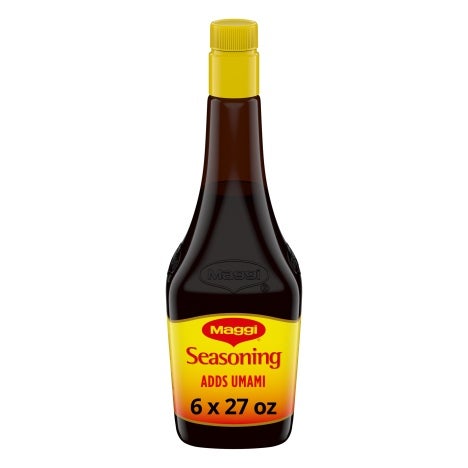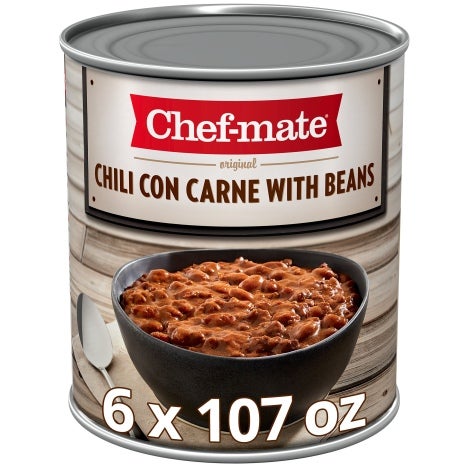
Protein Packed Menu Trends
Proteins are central to American flavor preferences. Learn how to satisfy that craving with both meat- and plant-based protein sources. We have trend info and recipes for you here.
On the one hand, there’s never been more interest in “vegetable-centric” menus. On the other, protein continues to drive sales and inspire some interesting menu offerings.
According to Packaged Facts, 62% of consumers are looking to eat more protein, a trend that promises continued inspiration in the area of red meat, poultry, and fish. And fortunately for vegetarians, the word is out that there are plenty of non-meat sources of protein, including not only eggs and cheese but also hearty and nutritious grains, seeds, nuts, beans, and legumes.
The rise in popularity of whole-animal butchery and onsite butcher shops is only part of the story. Entire restaurant concepts are being designed around the theme of meat, such as the new Son of a Butcher, in Chicago, with its menu of in-your-face meat choices like lamb tartare, tongue, and pork belly ramen.
Meaty New Trends
-
Burger blends provide the right ratio of lean to fat and flavor to body to bolster a signature house burger
-
Chicken thighs offer more flavor and less potential for drying out than breasts, and can be used in braises and stews as well as sautés and roasted dishes
-
Tapping the protein-as-a-garnish trend can be as simple as menuing a burger topped with a fried egg or a delicious chili dog
Get Started: Look to Chef-mate® for menu-making Original Chili con Carne without Beans and Hot Dog Chili Sauce with Meat. Another meaty topping to consider for hot dogs, burgers, baked potatoes, nachos, and more is Chef-mate Country Sausage Gravy.
-
Pulled pork is heating up, thanks to interest in regional cuisine and barbecue specialties
-
Offering sustainable seafood species (such as wild Alaska salmon, mussels, squid or farm-raised rainbow trout) helps educate customers and appeals to those who want to know where their food comes from
-
So-called “lesser cuts” like neck, shank, butt, and even marrow bones have gone from humble leftovers to haute specialty items—tough cuts that cost less but are delicious braised or otherwise slow-cooked. After all, if the world has embraced pork belly, can beef cheek be far behind?
Did You Know? Consumption of pork is on the rise again, with showcases in appetizers, sandwiches, and other menu items in addition to entrées.
-
As far as steaks go, popularity is branching out to include ultra-premium (like a 48-oz. porterhouse or bone-in filet mignon) and less expensive value cuts (such as flat iron, flank, or tri-tip)
-
Ethically raised meats like grass-fed beef, pastured pork, and free-range chickens are attracting a new generation of diners—and even vegetarians—who care about the treatment of animals
-
Cured meats and charcuterie (such as prosciutto, salami, and pâté) have become popular menu items in the realm of shareable “small plates” or high-impact tasting boards. You don’t need your own salumi program either; just start with high-quality purchased products, which are quick and easy to assemble and serve
-
The flip side of the small-plate phenomenon is the large-format feast, often centering on a large roast, entire rotisserie or fried chicken, or whole fish, served for a group
Vegetarian Sources of Protein
With more guests choosing a vegetarian or vegan lifestyle—or simply interested in meatless options from time to time—demand for alt-sources of protein is on the rise. These include:
-
Eggs
-
Milk and milk products, including yogurt (with Greek yogurt in particular riding a wave of popularity)
-
Cheese
Apart from these vegetarian-approved proteins, there are also many plant-based protein sources many of which have already become more popular for reasons of variety, flavor, or growing interest in global specialties. Indian cuisine, for instance, relies heavily upon ingredients like protein-packed lentils and chickpeas.
Get Started: All food needs flavor, but in order to overcome the perception of meatless food as being bland, Minor’s® offers vegetarian flavor boosters including sauces, bases, and flavor concentrates. Maggi® Seasoning is often added to vegetarian recipes to infuse a meaty, umami-rich savor.
- Quinoa – This delicious ancient “grain” (it’s actually a relative of spinach) has been making news not only for its versatility, but also because it’s a complete source of protein, including essential amino acids that are hard to get if you don’t eat meat
- Other protein-packed grains include:
- Spelt
- Kamut
- Teff
- Amaranth
- Sorghum
Tip: For Information on how to cook ancient grains, download our Ancient Grains Cooking Table resource here
- Beans and legumes including adzuki, split peas, kidney beans, white beans, and edamame are an excellent plant source of protein
Did You Know? Stouffer’s® offers several whole grain products, including Macaroni and Cheese Made with Whole Grains and Chicken Fettuccine Made with Whole Grains.
-
Soy products such as tofu and tempeh, as well as soy milk
-
Seitan, a wheat-based meat substitute originally from Japan
-
Peanut and other nut butters
-
Nuts and seeds, including cashews, almonds, pumpkin seeds, and sunflower seeds
-
Certain vegetables, such as spinach, corn, collards, broccoli, and mushrooms, include small amounts of protein, generally 5g per cup or less (where most adults need about 50g a day)




